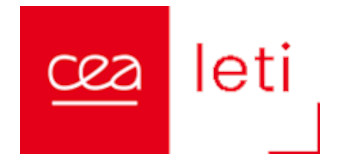CEA-Leti
 Leti is a French research institute that is part of CEA (a government-funded technological research organisation). Leti is a large institute with over 2,500 employees and it has an active OLED research.
Leti is a French research institute that is part of CEA (a government-funded technological research organisation). Leti is a large institute with over 2,500 employees and it has an active OLED research.
Leti's OLED program currently focuses on microdisplays. The lab spun-off MicroOLED back in 2007 and they are currently researching the full integration of OLED technology into systems (including IC integration if needed), optical development, encapsulation and more. Leti is also developing other OLED applications, such as optical communication and bio-related applications.










